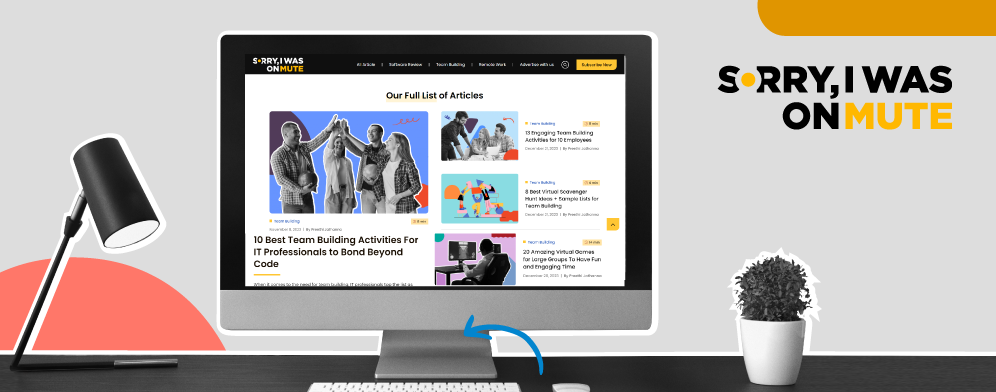1. What Are Flex Fridays?
Flex Fridays (or Flexible Fridays, to be clear) are when employers give their team the autonomy to choose how they wish to spend a day of the week. Friday, one could assume, but there is no reason why this couldn’t be applied to other days of the week too. Depending on how your work is structured, you can assign any day of the week as a “flex day”. By permitting employees to select their designated "flex day," you acknowledge their diverse needs and create an environment that values work-life balance.
2. Benefits of Flex Fridays for Employees
2.1. Increased Productivity
Does it sound counterproductive to claim that offering your staff the option to do fewer working hours can increase overall team productivity? Well, that’s because programs like Flex Fridays work miracles for team morale, which creates good energy that gets things done more. Some studies even claim that the four-day week is more productive than the traditional 5-day week.
2.2. Improved Work-Life Balance
This strategy is sure to improve the work-life balance of your team, resulting in happier, healthier workers who are potentially more excited to come to work. This is because they get more time to work on other projects or spend time with their families.
The reduction of stress and the opportunity to balance home and work life will improve their overall quality of life and even motivate them to do more. This can be a large catalyst for increased productivity, higher employee satisfaction, and the increase in motivation that you are looking for.
2.3. Higher Employee Satisfaction
When employees are given an increased sense of autonomy, their satisfaction as a member of your team goes up. Reducing the amount of time spent commuting to the office or being in the work environment will lead to stress reduction, which will increase overall job satisfaction.
All of these factors combined contribute to higher employee satisfaction and employee engagement.
2.4. Increased Creativity and Innovation
Flex Friday enhances creativity and innovation by providing individuals with the freedom to step away from their usual work routine. This break from the norm allows for a mental reset, fostering fresh perspectives and ideas.
By incorporating flexibility into the workweek, employees can tap into their creative reservoirs, leading to increased innovation as they approach tasks with renewed energy and a more open mindset.
3. Best Practices to Implement Flex Fridays
3.1. Grant Employees Flexibility
The best strategy in terms of how you should approach Flex Friday as an employer is to set and establish clear guidelines for how employees can use the option. In case employees opt to work, then you could make Fridays more non-work focused by scheduling engaging team building activities in the office. For remote and hybrid teams.
A great way is to contact a professional virtual teambuilding platform like Hooray Teams who host Murder Mysteries, Escape Rooms, Trivia Nights, and even a Paint workshop among others.
3.2. Encourage Communication

Communication is key, whether in terms of how you approach your staff or how they approach you in implementing flex Fridays. There are actions you can take to ensure this. One is by simply telling them so, while it can also be done through staff messages posted in the staff room, faculty settings, one-on-ones, or group staff emails where larger team sizes are involved.
You could create a communication channel on Slack or Teams to broadcast updates for Flex Friday well in advance so it helps both sides.
3.3. Provide Training and Resources
Depending on your department and how it is run, you may need to conduct training sessions to provide an overview of the Flex Friday program. If you have a dispersed or bigger team, it’s even more important to share and familiarize employees with any digital tools or platforms that will be used for communication, collaboration, and task management during flexible work.
You could create handbooks or FAQ documents that detail the Flex Friday policy and ensure they have IT support as well in case they take work offline. To ensure work productivity, also provide time management training to employees to help them set their own goals and manage their time efficiently thus ensuring work-life balance.
3.4. Set Realistic Expectations
It’s important to set sustainable and realistic expectations when you run a Flex Friday initiative. For instance, you will need to reschedule meetings that would have happened on Fridays and communicate the new time and date to the team in advance.
Also, you will have to account for employees working on remote or hybrid schedules. With them, you should consider establishing boundaries so that they are clear on deadlines and also on rescheduled timings for meetings.
3.5. Emphasize Accountability
When situations become more autonomous, it is vital to emphasize accountability as effective managers. For instance, if a member of your team takes Friday off consistently to spend time with their family, and isn’t getting their work done on time, it's essential to establish clear expectations regarding accountability and performance.
You must make a point of informing staff that they are accountable for managing their workload. Ask them to communicate their tasks and deadlines through progress trackers and quick check-ins to avoid any backlogs or performance issues. This also helps them be more clear about what are flex Fridays when it comes to using the days off.
3.6. Encourage Experimentation
Getting the work-life balance right depends on the individual, and nobody’s needs are identical. So, why not encourage your staff to experiment with the Flex Friday opportunity over the coming months?
You can try and analyze which days of the week seem to be the best fit for an in-office arrangement, explore different options to conduct in-office or virtual meetings and encourage feedback from employees on the ground realities of how it’s panning out. This way they can figure out (in a truly autonomous fashion) what works best for them
4. What Should You Choose: Flex Friday vs. 4-Day Week

4.1. Flexibility
Flex Fridays offer employees the ability to work from home or adjust their schedules on Fridays, while a 4-day workweek typically involves working longer hours for four days in exchange for having one extra day off. If you wish to place more control over your schedule and work location, then Flex Fridays might be the greater of the two choices.
4.2. Workload
Typically, the workload of a four-day week is greater than that of a five-day week, which has the potential to be a more stressful time frame, depending on the nature of the work. Conversely, the Flex Friday program offers employees the ability to divide their workload into how they see fit.
4.3. Productivity
The flexible working schedule is reportedly more productive than the five-day week, due to higher job satisfaction and the work-home balance. If this interests you, it’s a good way to go. But the Flex Friday program offers both as well. It offers employees the choice of being more productive during the four days or working extra hours.
4.4. Company Culture
Autonomy is a big factor here - company culture is hugely influenced by it, in that the independence of your staff will increase their job satisfaction, leading to a more positive culture. In that sense, the Flex Friday program wins, because it offers employees the choice. Whereas the four-day week is more commanding, in that employees don’t have that choice.
5. What Companies Are Offering Flex Fridays?
5.1. Salesforce
While Salesforce doesn’t explicitly use the term “flex Friday” they do speak at length about flex work being a team sport and boast of “no meeting Friday”, which falls directly under the banner of a flex shift. Due to this, they discuss how remote working has been highly effective for them over the past 20 months and counting. Salesforce is a very successful business and is only growing more by the day.
5.2. Dropbox
Dropbox is a renowned company that developed one of the very first Cloud storage systems when the necessity for them came to be. After trying a four-day workweek with excellent results, they are now running their team with flex day schedules. In their article, they discuss the importance of asking employees what they want and the value of constantly improving flexible work schedules. This shines some light on their efforts to improve and optimize their flex initiative.
5.3. HubSpot

Hubspot is a CRM platform that puts every aspect of a company scaling into one location, and they’re doing a very fine job indeed since its inception. They have a smooth UI and are accessible to businesses of all kinds. Recently, they published an interesting article detailing the benefits of Friday at-work flexible schedules, including the use of flex days, and four-day weeks.
5.4. LinkedIn
What are flex Fridays if LinkedIn isn’t making use of them? LinkedIn is one of the top social networks for careers. But they’re not just a website, they run a big operation, and Flex days have provided them with boons. LinkedIn reports on the value of flexibility, and how more employees want this today. They also claim that the “pros outweigh the cons” when it comes to flexible working schedules.
5.5. Sorry, I was on Mute

When it comes to flex Fridays, the Sorry, I was on Mute team makes the most of the day. Fridays are reserved as a day with no meetings, and teambuilding activities on alternate weekdays. This way the team even though they are remote can create shared experiences. Employees are also encouraged to share their inputs on what they want their Friday to look like.
6. FAQs
6.1. What are flex days?
These are days when you, the employee, can choose what you wish to do on that day. You can pick between taking a four-day week and a three-day weekend and splitting your time fifty-fifty. You can also work remotely or hybrid. It all depends on your employer, but the system is designed to improve work-life balance.
6.2. What are flex shifts?
If you are contemplating what are Flex Fridays and what they can be, then here’s a tip: They can be introduced as Flex shifts. Flexi shifts are shifts taken voluntarily by staff during flex days - so if you are one of the employees who choose to work rather than take the day off, you will technically be working a flex shift.
6.3. What is a flex position work?
A flex position is a set-up where the employees work full days but with the option to adjust and vary their working hours. In this arrangement, staff still generally have core working days.
6.4. What does soft Fridays mean?
A soft day (it could be any day, not only a Friday) is a day that has no meetings, and generally no mandatory work. It gives the staff the autonomy to pick their own day. If it’s a Friday, this is a treat to look forward to.
6.5. Is Flexing Friday the same as Flex Friday?
Yes, "Flex Friday" and "Flexing Friday" are essentially the same thing. Both terms are often used on social media platforms but they both refer to giving employees the freedom to design their own Friday.
 Interested in Virtual Team Building Events?
Interested in Virtual Team Building Events?





















